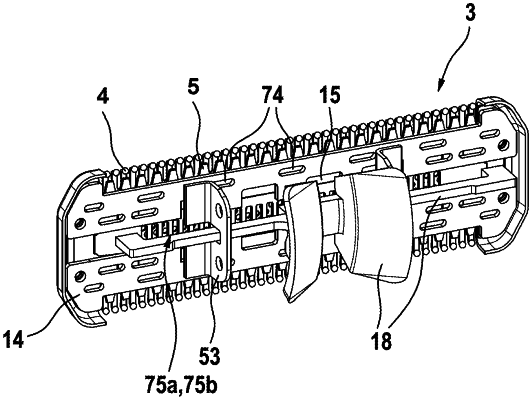| CPC B26B 19/06 (2013.01) [B26B 19/046 (2013.01); B26B 19/10 (2013.01); B26B 19/3846 (2013.01)] | 15 Claims |

|
1. A cutter system for an electric shaver and/or trimmer, comprising:
a pair of comb-like cutting elements comprising a movable cutting element and a stationary cutting element;
the movable cutting element having two rows of cutting teeth arranged on opposite longitudinal sides of the movable cutting element;
the stationary cutting element having two rows of cutting teeth arranged on opposite longitudinal sides of the stationary cutting element;
wherein the stationary cutting element has thickened and/or rounded tooth tips overhanging the tooth tips of the movable cutting element;
wherein said cutting teeth from one of the two rows of the stationary cutting element are different from the cutting teeth from the other row of the stationary cutting element in terms of shape and/or size and/or position of said overhanging tooth tips so that the one row of the cutting teeth of the stationary cutting element provides for a more aggressive and closer cutting action, whereas the other row of the cutting teeth of the stationary cutting element provides for a less intensive and more pleasant skin feel, wherein the cutting teeth from the one row of the stationary cutting element and the cutting teeth from the other row of the stationary cutting element have skin contact surfaces which are substantially coplanar;
wherein said overhanging tooth tips of the other row of the cutting teeth protrude from the skin contact surfaces of main portions of the cutting teeth towards the skin to be contacted, further than the overhanging tooth tips of the one row the cutting teeth, and/or the overhanging tooth tips of said one row the cutting teeth is positioned further away from the skin contact surfaces of the main portions of the cutting teeth than the overhanging tooth tips of said other row of the cutting teeth.
|